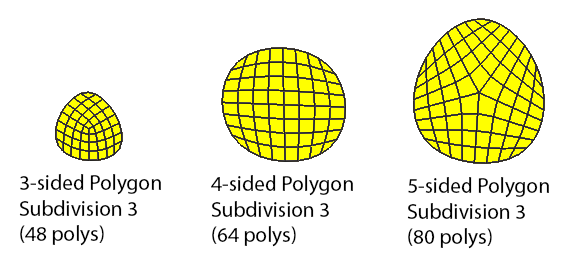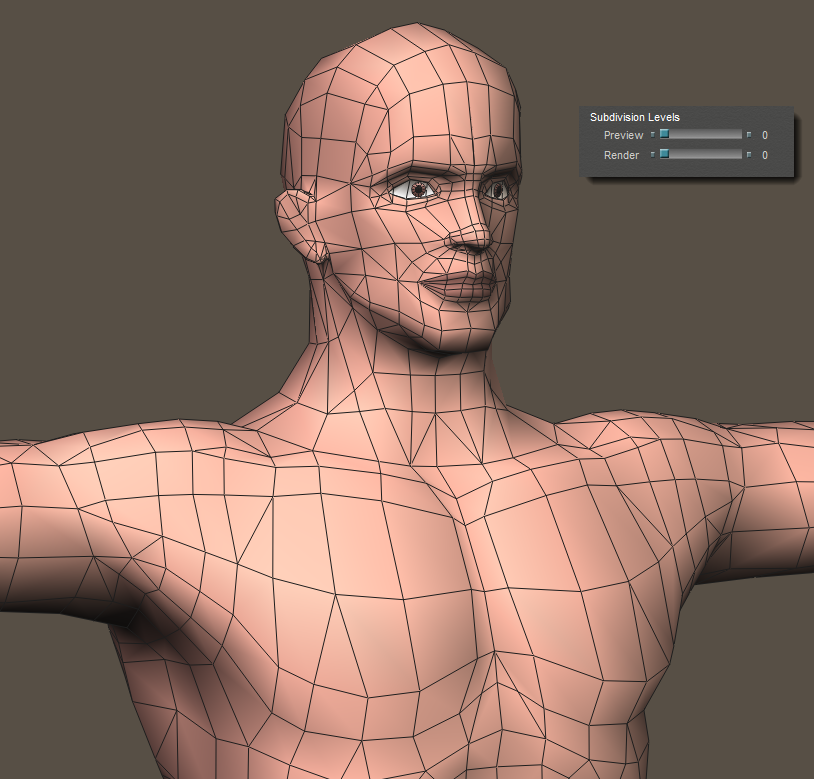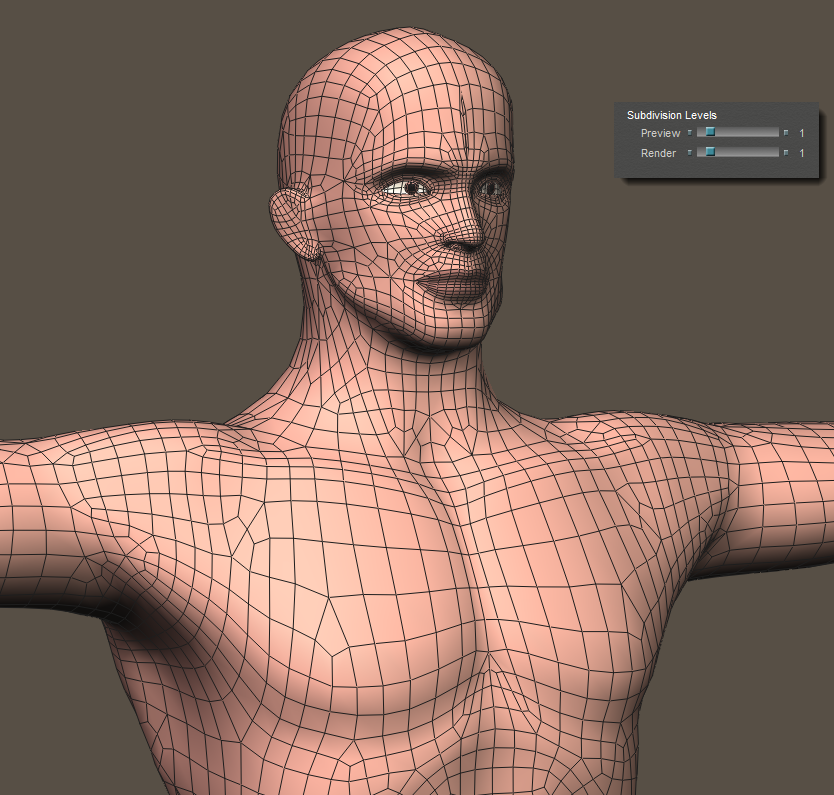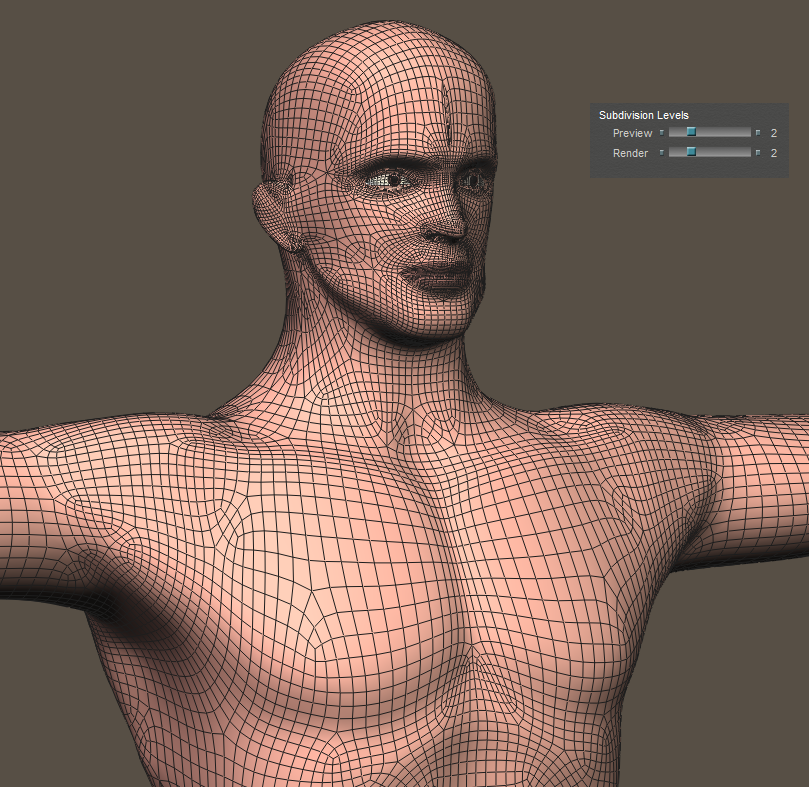Finding the Optimum Setting
As you continue to increase the subdivision levels, you will get to the point where you won’t really notice much of a change in the appearance of the polygons. Depending on the edge loops in the model, this most often happens between a subdivision level of 2 or 3. To illustrate this, compare the figure below with the preceding example. You won’t notice a lot of difference in the shape of the outer edge of the polygon. The only thing that you notice now is that it appears as though there are four times the number of polygons. Your 3, 4, and 5-sided polygons now look like 48, 60, and 80 polygons (respectively), but the appearance hasn’t changed much along the outer edge.

3, 4, and 5-sided polygons with subdivision setting of 3.
What this means, is at some point it won’t make a lot of difference in your preview or final render to increase the subdivision beyond an optimum point. To do so will only increase the load on your system resources as you increase the number of subdivision levels beyond what you actually need.
Now that you’ve seen how subdivision affects a single polygon, consider the effects on a figure such as the Poser 2 male, which consists of 2572 polygons. You can find this figure in the Figures > Included > People > Poser Originals > Poser 2 Lo Library category.
The Poser 2 Male is made of polygons that have 3 or more sides: With no subdivision, it appears as shown in the following figure. Pay attention to the crown of the head, which appears to have some hard edges.

Poser 2 Male with no subdivision.
When you set the subdivision level to 1, you’ll notice that the hard edges are softened somewhat. The hard edges at the crown of the head are much improved, but still don’t appear quite as smooth as you would like. You’ll also notice that the chest muscles retain their shape because the edge flow in that area follows the shape of the muscular detail. The facial features are less angular, giving a softer appearance to the eyes, nose, mouth, and ears. With one level of subdivision, you’ll get the equivalent of a model that has about 10,000 polygons.

Poser 2 Male with subdivision setting of 1.
Increasing the subdivision level to 2 (about 40,000 polygons) doesn’t seem to change the appearance of the chest and arms very much; however, you’ll notice that the crown of the head appears very smooth now. However, the facial features might be softened a bit too much at this level. The primary reason for this is because there isn’t enough edge flow in those areas to retain the detail in those areas, because the model wasn’t built with subdivision in mind.

Poser 2 Male with subdivision setting of 2.
As you can see from the preceding examples, content creators should pay attention to areas that will require more detail. A 20,000 polygon figure can easily contain enough edge loops to make a subdivision setting of 1 sufficient enough to produce sufficient detail and a great render, as long as it’s modeled with subdivision in mind. To maintain detail, edge loops have to be placed near areas where you want creases, sharp transitions, and folds to appear, otherwise the subdivision will smooth those details away.